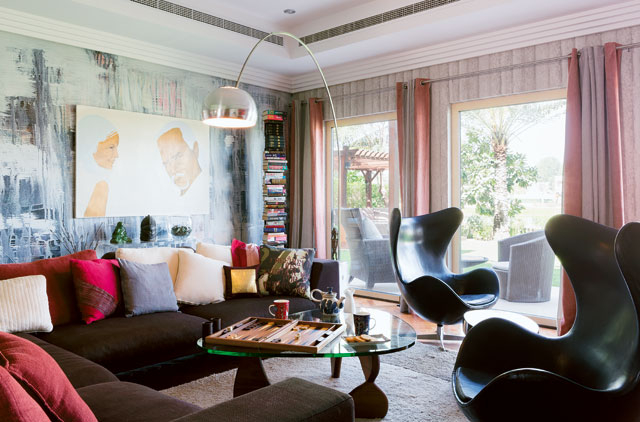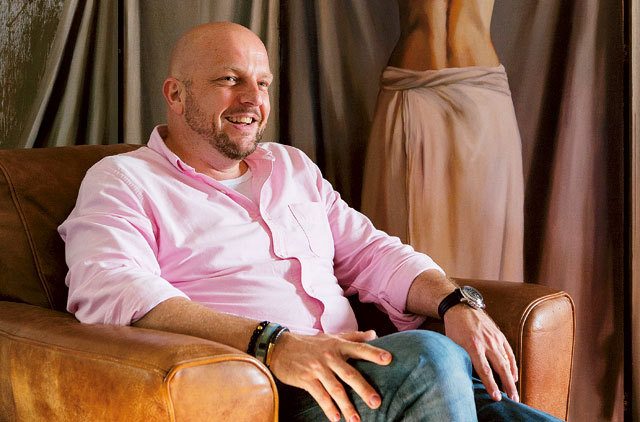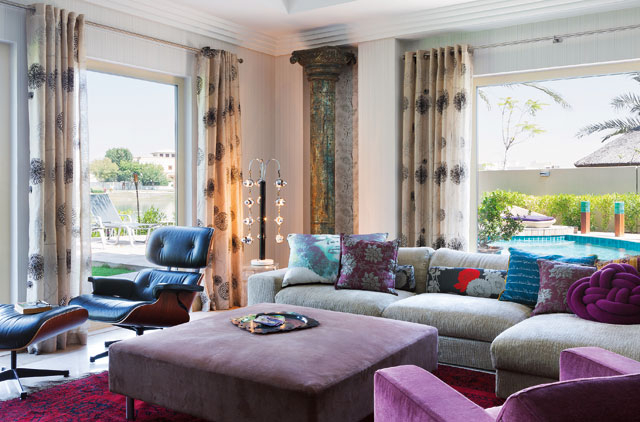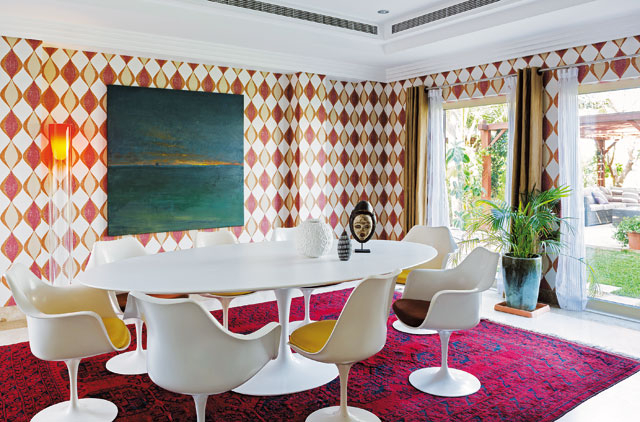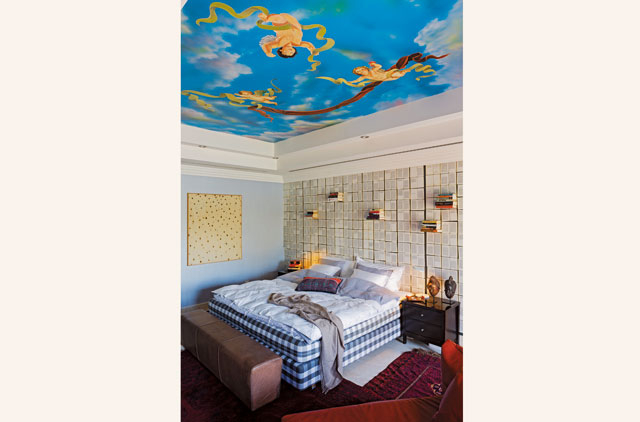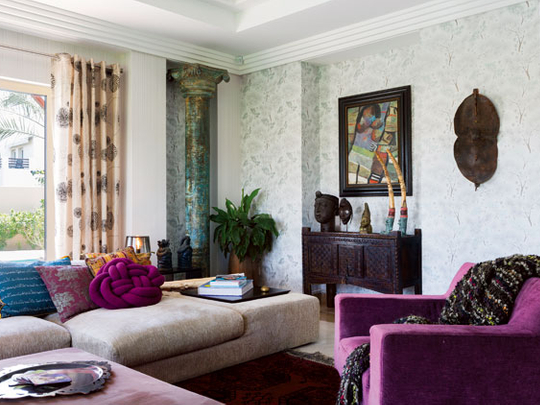
Lars Narfeldt, the founder of Dubai design store D.tales, first moved into his 650-square-metre Meadows home with his family in 2004. With a keen eye for original design classics and a sixth sense for what styles work best together, Lars and his family have created a vibrant home full of character and memories. We chat to him about how this space came together.
Who lives here? I do, with my wife Soraya, who runs her own company; our seven-year-old son Adam, who likes Roman battles; a confused cat called Shadow, who believes he is a dog; and a number of house guests who come and go, including our older sons Anwar, 25, and Samer, who is 23.
What made you fall in love with this property? The plot size is great, it sits at the perfect angle overlooking the lake, and the house is spacious with many rooms. When we were looking for a new place we had our two teenage sons living with us in an apartment on Sheikh Zayed Road. This house has a self-contained upstairs area that includes a kitchenette and living room, so
it made sense to move here to give the boys
their own space.
Did the house need much work? Over the years we have made quite a lot of changes. We’ve altered doorways so they lead out to the garden, laid an American walnut floor and moved the original swimming pool to the other side of the garden. Because I work in interiors I am constantly trying out new things. The next thing on the to-do list is a full bathroom renovation.
How do you describe your style? Eclecticism based on personalities. We travel often and tend to spend a lot of time in hotels. When we come back the last thing we want is for our home to look like a hotel, so we’ve decided to fill it with art and furniture that represents us. All of the pieces reflect our past and have been collected as memories, expressing our combined and individual personalities. When looking around any room, we instantly remember where we come from and what has brought us to where
we are today.
Where do you find your unique pieces? The root style is Scandinavian, as many of the key pieces are from that design school, but there are many other items that we picked up on travels and inherited from family and friends. I believe a home should be liveable and not just a showpiece. We have a young child living here and friends visit all the time, so it’s imperative that the furniture can take wear and tear. I keep telling my son that he will inherit the furniture one day, which encourages him to look after it.
Where did you get the African and Asian artefacts from? My wife collects African masks and bronzes and she has an impressive collection from the Democratic Republic of Congo, the Ivory Coast and Sierra Leone. These are combined with carved wooden doors and chests from Afghanistan, pots from Uzbekistan and other trinkets from Sudan, Chad and Somalia. I collect contemporary art and lamps and the mix seems to really work.
Why did you choose the furniture you did? I worked in the Ministry of Foreign Affairs and for the United Nations for many years and didn’t have a real home. My possessions were packed in boxes in Sweden. When my wife and I finally decided to set up a home, it was important for us to make it the real thing. I have always been interested in furniture and, being Swedish, I was taught that quality lasts. I started looking at auction houses for the original pieces that I had grown up with, the Egg and Swan chair by Arne Jacobsen and the Jetson Lounge Chair by Bruno Mathsson for instance. I find that the originals look more beautiful as they age.
Do you have a favourite piece? Each piece has a story to tell so it’s hard to pick one. My Swan chair from 1958 has developed the most amazing patina, and now its leather looks almost brown when, in fact, it was black in the beginning. The String shelf in the lounge, designed by Nisse Strinning in 1949, is the most incredible shelf. It’s so light that it’s almost invisible. I also love the Italian hanging table lamp in the living room that I got many years ago from Portobello Road in London.


